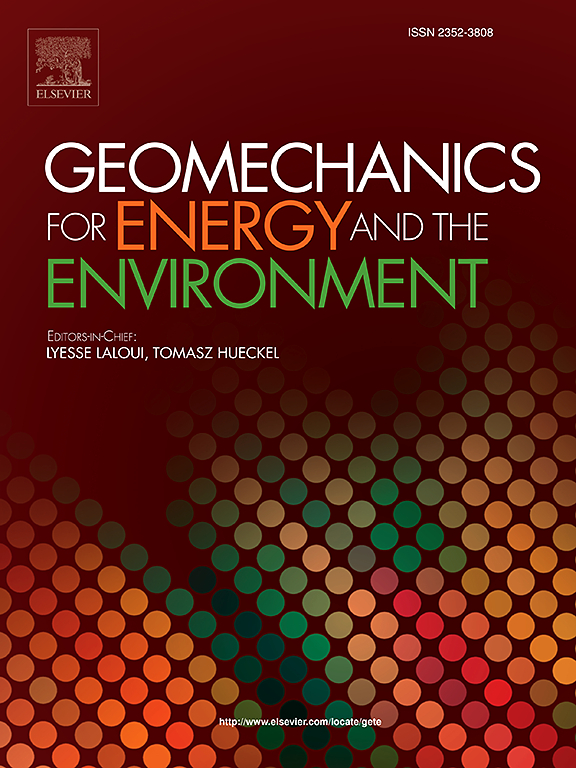Study on the characteristics of coal pore structure changes during hot flue gas displacement and their impact on the gas displacement effect
IF 3.7
2区 工程技术
Q3 ENERGY & FUELS
引用次数: 0
Abstract
Gas displacement by hot flue gas injection into the coal body is a hot spot in the research on high-gas and low-permeability coal seams. Injecting hot flue gas generated by gas power plants into coal seams will introduce water and CO2, and the introduced CO2 will dissolve and ionize to form an acidic environment, leading to the dissolution of minerals in coal. Therefore, it is particularly important to study the impact of coal pore structure changes on gas displacement before and after mineral dissolution. In this study, the impact of mineral dissolution in coal was explored by combining Computed Tomography (CT) and COMSOL Multiphysics numerical simulation, and the parameters of the numerical model were determined based on gas adsorption-desorption experimental results. The following conclusions were drawn at the millimeter scale: (1) Compared with the Langmuir equation, the BET equation is more competent to act as an isothermal adsorption and desorption model of coal in high-gas and low-permeability coal seams. (2) After 10.11 % of minerals dissolve, the flow velocity and outlet flow rate in the fractures formed at the original positions of minerals both increase significantly, and the model permeability grows from 7.0711 × 10−12 m2 to 2.2331 × 10−11 m2. (3) The time consumed for the residual gas pressure to drop from its initial value to 0.1 MPa was calculated. (4) After mineral dissolution, the coal pore structure alters, resulting in changes in the distribution of gas pressure during displacement, and the gas pressure varies obviously spatially.
热烟气置换过程中煤孔隙结构变化特征及其对置换效果的影响研究
热烟气注煤驱替是高瓦斯低渗煤层研究的一个热点。将燃气电厂产生的热烟气注入煤层会引入水和CO2,引入的CO2会溶解电离形成酸性环境,导致煤中的矿物质溶解。因此,研究矿物溶解前后煤孔隙结构变化对气体驱替的影响就显得尤为重要。本文采用计算机断层扫描(CT)和COMSOL多物理场数值模拟相结合的方法,探讨了煤中矿物溶解的影响,并根据气体吸附-解吸实验结果确定了数值模型的参数。在毫米尺度下得出以下结论:(1)与Langmuir方程相比,BET方程更适合作为高瓦斯低渗煤层煤的等温吸附解吸模型。(2) 10.11 %的矿物溶解后,在矿物原始位置形成的裂缝中流速和出口流速均显著增大,模型渗透率由7.0711 × 10−12 m2增大到2.2331 × 10−11 m2。(3)计算了残余气体压力从初始值降至0.1 MPa所需的时间。(4)矿物溶解后,煤的孔隙结构发生改变,导致驱油过程中瓦斯压力分布发生变化,瓦斯压力在空间上存在明显差异。
本文章由计算机程序翻译,如有差异,请以英文原文为准。
求助全文
约1分钟内获得全文
求助全文
来源期刊

Geomechanics for Energy and the Environment
Earth and Planetary Sciences-Geotechnical Engineering and Engineering Geology
CiteScore
5.90
自引率
11.80%
发文量
87
期刊介绍:
The aim of the Journal is to publish research results of the highest quality and of lasting importance on the subject of geomechanics, with the focus on applications to geological energy production and storage, and the interaction of soils and rocks with the natural and engineered environment. Special attention is given to concepts and developments of new energy geotechnologies that comprise intrinsic mechanisms protecting the environment against a potential engineering induced damage, hence warranting sustainable usage of energy resources.
The scope of the journal is broad, including fundamental concepts in geomechanics and mechanics of porous media, the experiments and analysis of novel phenomena and applications. Of special interest are issues resulting from coupling of particular physics, chemistry and biology of external forcings, as well as of pore fluid/gas and minerals to the solid mechanics of the medium skeleton and pore fluid mechanics. The multi-scale and inter-scale interactions between the phenomena and the behavior representations are also of particular interest. Contributions to general theoretical approach to these issues, but of potential reference to geomechanics in its context of energy and the environment are also most welcome.
 求助内容:
求助内容: 应助结果提醒方式:
应助结果提醒方式:


